Brownfields Introductory Information
Then
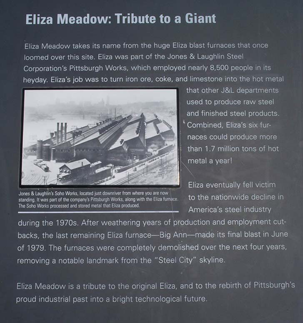
When businesses and industrial companies close or move to a new location, there may not be a new buyer for the land that their company occupied. These pieces of land may become abandoned, underused, or remain idled (not used). When a real piece of land has or is perceived to have hazardous materials, pollutants, or contaminants it makes the redevelopment, expansion, or reuse of it more complicated. Since the contaminants are unsafe for living things that might use the land, the land must be tested and cleaned up if the contaminants are confirmed.
Now
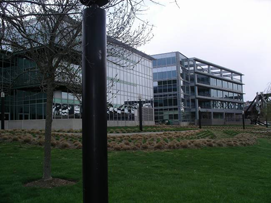
The cleaned up Jones and Laughlin steel mill site. This land is now home to the Pittsburgh Technology Center
The remediation (clean up) and redevelopment of Brownfield sites is a way to create more sustainable communities. If ignored, a town could eventually be filled with contaminated land and making it difficult to live or work there. The EPA has many categories of brownfields. These are common pieces of land that are normally found through out cities, towns, and communities. Examples of businesses that may have been on a Brownfield include: a gas station, steel mill, land fill, a factory, automotive repair, farmland, dry cleaner, battery recycling and/or disposal, electroplating, machine shop, marine maintenance (boat repair), petroleum (oil) refinery, printing industry, railroad yard, research institution, smelter operations, wood preserving, or a coal gasification plant.
By knowing the type of business was on a piece of land the new potential owner of the land may have some insight as to what contaminants may be found there. Contaminants are chemicals that may be harmful to animals, plants, and to the environment. They may be present in the soil, air, or in the ground water.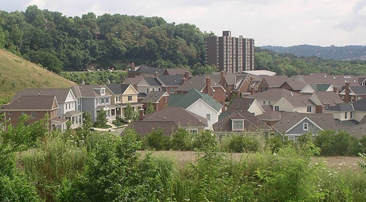
When looking for a piece of land a buyer may not immediately see a benefit of purchasing a brownfield. It must be cleaned up before it can be used again. The repair of a brownfield is a serous issue. The new owner would not want people to get sick from the contaminants. The remediation, or clean up, could take a lot of time and money.
Superfund is the name given to the environmental program established to address abandoned hazardous waste sites. It is also the name of the fund established by the Comprehensive Environmental Response, Compensation and Liability Act of 1980 (CERCLA). This law was enacted in the wake of the discovery of toxic waste dumps such as Love Canal and Times Beach in the 1970s. It allows the EPA to clean up such sites and to compel responsible parties to perform cleanups or reimburse the government for EPA-lead cleanups. There are more than 1,300 Superfund sites in the United States.
In urban, suburban and rural areas, brownfield redevelopments:
- Create productive use of idle property—increasing surrounding property values and contributing to the long-term sustainability of the community
- Provide job opportunities
- Grow local tax bases
- Restore land to an environmentally sound condition
- Take advantage of existing infrastructure (roads, bridges, utilities, etc)
A park, school, residential district, retail area or any number of developments can be placed on unused or underused brownfield property, turning an eyesore into a vibrant part of the community.
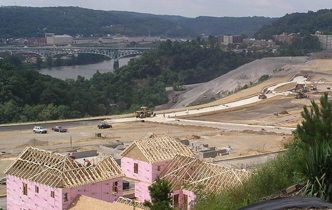
The Pittsburgh area has many brownfields. The largest of these brownfield sites are the former sites of the huge steel mills. From the late 1800’s through the 1970’s Pittsburgh was the world leader in steel production. Heating and mixing iron ore with limestone or dolostone makes steel. These compounds make steel strong. Most of these steel mills have shut down leaving many large brownfields. The steel mills and slag dumps remained after the production of steel ceased.
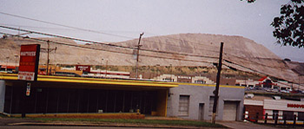
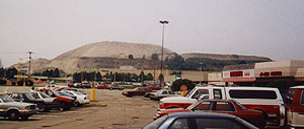
One section of a giant slag pile that has been converted into a shopping center near Pittsburgh.
Slag is an unwanted by product of the production of steel. It is an alkaline, (high pH), and made up mostly of dirt and limestone or dolostone. Unfortunately slag also has other impurities such as heavy metals which are very harmful to people. Most plants usually prefer a slightly acidic soil and do not grow on areas that are covered with slag.
When the hot steel is molten (a liquid) the slag floats to the top of the container and the steel sinks below it. The molten steel is then drained out through the bottom of the container and the slag is left behind. Next, the slag is then drained into a separated container. The slag was dumped into large piles on land around the steel mills, some looking like mountains. This shows how much steel was made in Pittsburgh. In the late 1970’s through the 1980’s most of the steel mills in Pittsburgh were closed. The region was challenged to find ways to reuse the large steel mill sites and slag piles that remained. Many have been reclaimed are now the site of thriving new business and shopping centers. The giant slag mountains have been converted into upscale malls, shopping centers, and housing plans.
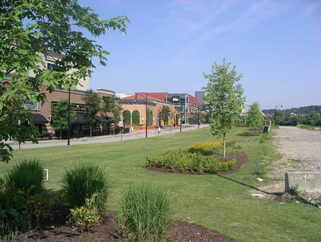
The Southside Works in Pittsburgh.
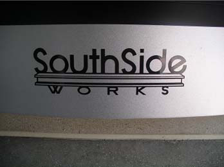
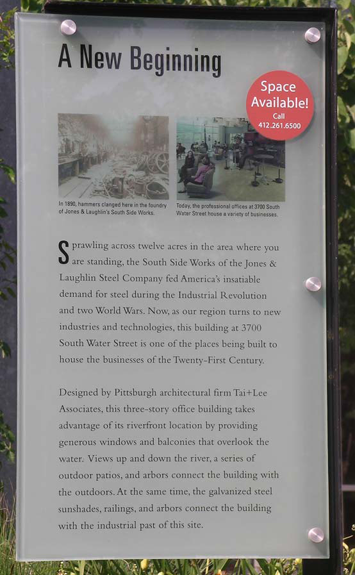
The plaque reads: Sprawling across twelve acres where you are standing, the South Side Works of the Jones and Laughlin Steel Company fed America’s insatiable demand for steel during the Industrial revolution and two World Wars. Now, as our region turns to new industries and technologies, this building at 3700 South Water Street is one of the places being built to house the businesses of the twenty first century.
The South Side and Hazelwood areas of Pittsburgh were once home to one of the largest steel making complexes ever built. The entire South Side mill and some of the Hazelwood complex, including the Eliza blast furnace, have been demolished and the hazardous wastes that were found there have been removed, to allow for re-development. The Hot Metal Bridge named because railroad cars transported hot metal from one section of the mill to another across the river has been rebuilt to accommodate vehicular traffic. The South Side land is now a thriving high end shopping area, business center, and world-class sports facility center. One section of the Hazelwood complex has been converted and is now the Pittsburgh Technology Center.
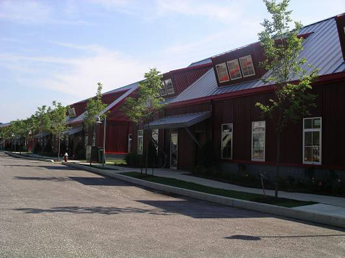
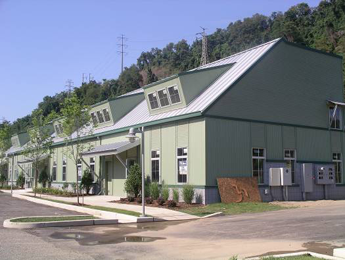
The Southside Works professional offices.
To learn more about brownfield redevelopment in Pennsylvania, visit the web site of the Department of Environmental Protection.
Sources:
Western Pennsylvania Brownfields Center
Environmental Protection Agency
Photographs taken by John Tagg.